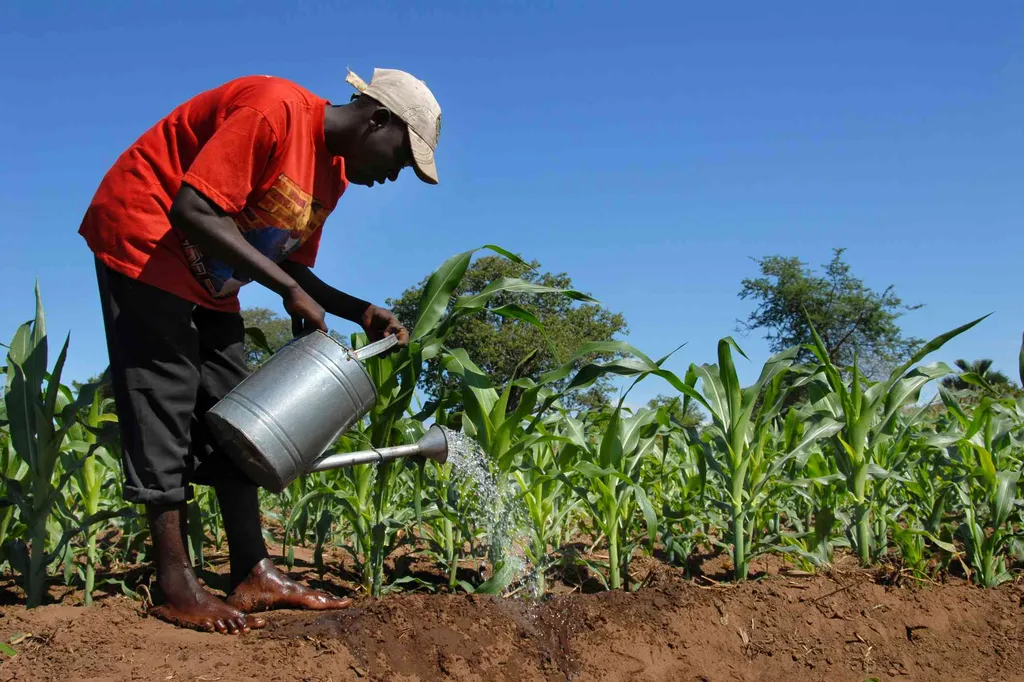In the heart of western Ghana, a silent battle is unfolding beneath our feet. Not one of man versus nature, but a subtle interplay of soil types and potentially toxic elements that could shape the future of sustainable agriculture and land use. A recent study, led by Meryem El Mellouki from the Center of Excellence for Soil and Africa Research in Africa at Mohammed VI Polytechnique University in Morocco, has shed light on this intricate dance, with implications that resonate far beyond the borders of Ghana.
The study, published in the journal ‘Frontiers in Soil Science’ (translated to English as ‘Frontiers in Soil Science’), focuses on two predominant soil types in the region: Acrisols and Ferralsols. These soils, while seemingly similar, exhibit distinct behaviors when it comes to the distribution and enrichment of potentially toxic elements. “Understanding these differences is crucial for developing targeted soil management strategies,” El Mellouki explains.
The research team employed a suite of analytical tools, including geo-accumulation indices, enrichment factors, and risk indices, to evaluate soil pollution classes and assess soil quality’s effect on pollution hazard. Their findings revealed subtle yet significant differences between the two soil types. Acrisols, for instance, exhibited slightly elevated levels of elements like selenium (Se), molybdenum (Mo), iron (Fe), and titanium (Ti), suggesting localized enrichment possibly linked to natural processes or minor external inputs.
In contrast, Ferralsols showed moderate enrichment of chromium (Cr) and nickel (Ni), consistent with their parent material characteristics. “The enrichment factor values for all elements in both soil types were below 2, classifying them as ‘depletion to minimal enrichment’,” El Mellouki notes. This indicates that elemental concentrations are predominantly of geogenic origin, rather than anthropogenic inputs, a finding that could significantly influence future land use and agricultural practices.
The study also employed Principal Component Analysis (PCA) to distinguish between the two soil types. Acrisols were associated with higher trace metal concentrations and greater organic matter content, while Ferralsols were influenced more by aluminum (Al) and iron (Fe) oxides. Heatmap analysis further highlighted distinct element clustering, with Cr, Ni, and Se more prominent in Ferralsols, and Mo, Ti, and other trace elements showing spatial variation in Acrisols.
These findings underscore the influence of pedogenic processes and mineral weathering in shaping elemental distributions across soil types in tropical environments. They also support a soil-type-specific management approach to ensure environmental protection and sustainable land use. The Soil Quality Index indicated that Ferralsols had slightly lower surface horizon quality, likely due to leaching, while Acrisols showed higher quality in deeper horizons, reflecting better nutrient retention.
The implications of this research extend beyond western Ghana, offering valuable insights for the energy sector and sustainable agriculture. As the world grapples with climate change and food security, understanding the intricate dynamics of tropical soils becomes increasingly important. “This study provides a foundation for developing tailored soil management strategies that can enhance soil health and productivity,” El Mellouki concludes.
In the energy sector, these findings could inform decisions about land use and soil management in tropical regions, ensuring that agricultural practices are sustainable and environmentally friendly. As the world shifts towards renewable energy sources, the need for sustainable land use practices becomes even more critical. This research could guide the development of bioenergy crops and other agricultural practices that are both productive and environmentally responsible.
Moreover, the study highlights the importance of understanding the natural distribution of potentially toxic elements in soils. As the world seeks to reduce its reliance on fossil fuels, the demand for minerals and metals used in renewable energy technologies is expected to rise. This research could help identify areas where these minerals are naturally enriched, guiding responsible mining practices and reducing the environmental impact of resource extraction.
In conclusion, this study is a testament to the power of scientific inquiry in shaping our understanding of the natural world. By unraveling the complex interplay of soil types and potentially toxic elements, El Mellouki and her team have provided valuable insights that could guide future developments in sustainable agriculture, land use, and the energy sector. As we navigate the challenges of the 21st century, such research will be instrumental in ensuring a sustainable and prosperous future for all.

